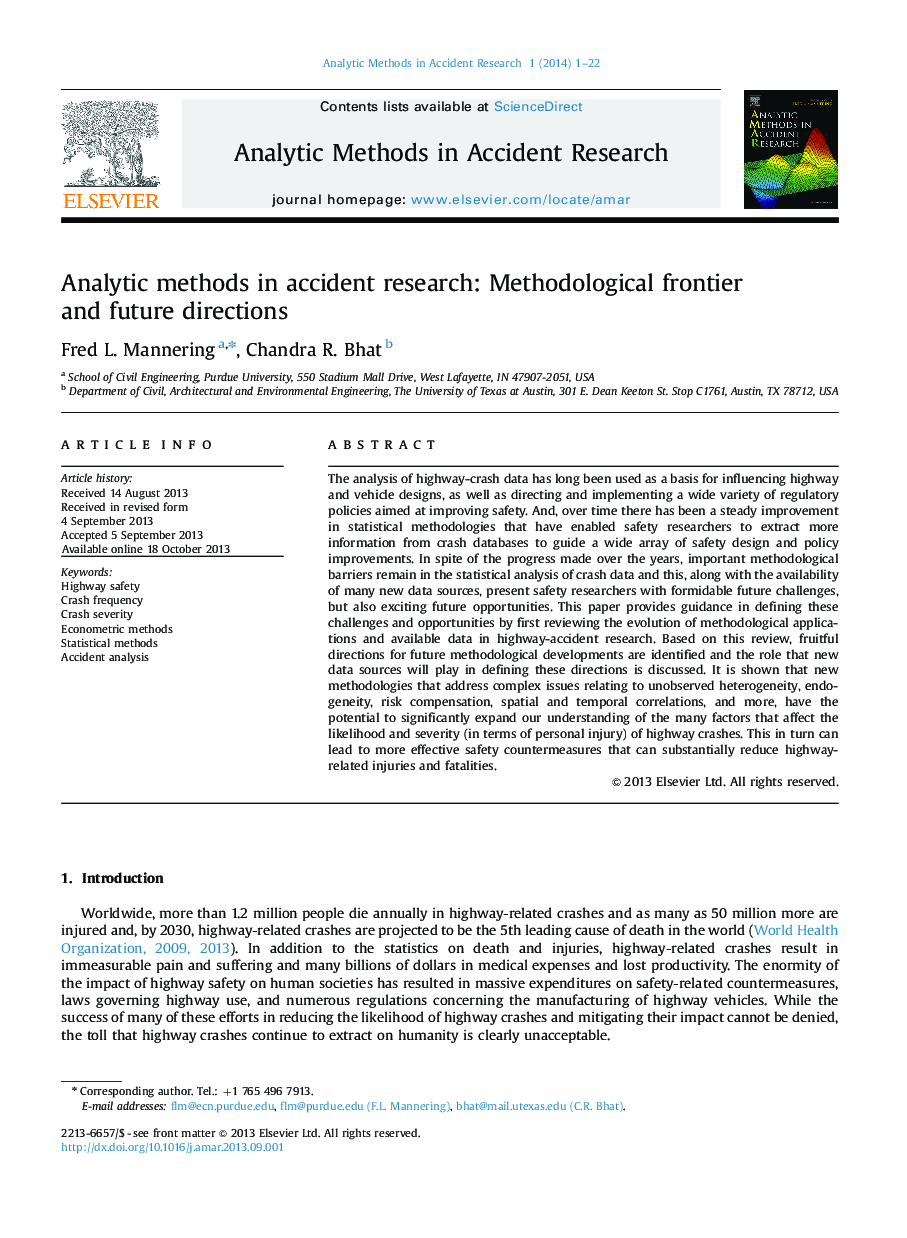| Article ID | Journal | Published Year | Pages | File Type |
|---|---|---|---|---|
| 1104517 | Analytic Methods in Accident Research | 2014 | 22 Pages |
•The evolution of methodological applications used in accident research.•Issues of unobserved heterogeneity, endogeneity, and risk compensation.•Identification of directions for future methodological developments.
The analysis of highway-crash data has long been used as a basis for influencing highway and vehicle designs, as well as directing and implementing a wide variety of regulatory policies aimed at improving safety. And, over time there has been a steady improvement in statistical methodologies that have enabled safety researchers to extract more information from crash databases to guide a wide array of safety design and policy improvements. In spite of the progress made over the years, important methodological barriers remain in the statistical analysis of crash data and this, along with the availability of many new data sources, present safety researchers with formidable future challenges, but also exciting future opportunities. This paper provides guidance in defining these challenges and opportunities by first reviewing the evolution of methodological applications and available data in highway-accident research. Based on this review, fruitful directions for future methodological developments are identified and the role that new data sources will play in defining these directions is discussed. It is shown that new methodologies that address complex issues relating to unobserved heterogeneity, endogeneity, risk compensation, spatial and temporal correlations, and more, have the potential to significantly expand our understanding of the many factors that affect the likelihood and severity (in terms of personal injury) of highway crashes. This in turn can lead to more effective safety countermeasures that can substantially reduce highway-related injuries and fatalities.
